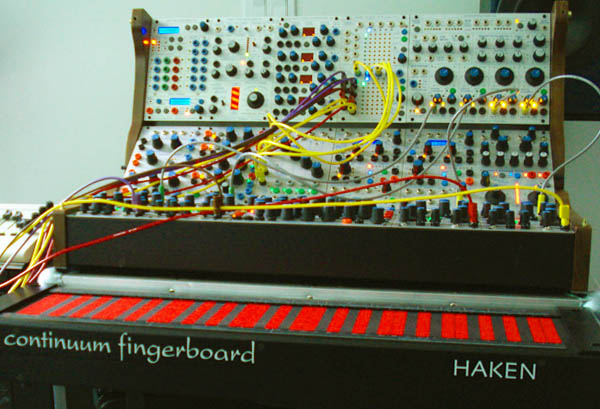
Electronic musicians are used to getting their gear on the cheap, and there’s something beautiful about that. But that doesn’t take away from some of the short-run, brilliant instruments out there. Topping the list: Buchla’s 200e, which continues the stories tradition of the Buchla modular synths, and the Haken Continuum Fingerboard, which provides continuous control far exceeding the accuracy and expressiveness of almost any controller out there. Our friend Richard Lainhart just took deliver of his 200e, and captures it moving into the studio with the Haken.
18 unit modular + Haken Continuum + quad sound — it’s a beautiful thing.
I singled out the Buchla modulars as an underrated synth. They might also be on the “misunderstood” list. Conventional wisdom goes that the Moog Modular synth became more popular because it was more friendly to musicians. The design of the Buchla itself, though, is often equally exceptional in comparison to the Moog Modulars. In fact, what’s remarkable about these two modulars is that they each evolved in parallel, on opposite coasts, sometimes with similar ideas — and both are incredibly sophisticated sound production instruments. Looking at the Buchla is a reminder that none of the design decisions on the Moog were inevitable, and visa versa. I spent a couple of years in the studio at Sarah Lawrence College looking at the two side by side, so I had plenty of time to reflect on this (especially since I screwed up my patches half the time).
One bit of conventional wisdom that is true is that Don Buchla favored alternatives to the standard piano/organ-style keyboard added early to the Moog — though even for those working on the Moog, this was a controversial issue. That makes the Continuum the perfect modern controller for a Buchla. What’s interesting to me — keeping in mind, I love keyboards and always will — is that the world has gradually come full circle. Maybe in the 60s, people weren’t quite ready to absorb new sounds and new controllers (though Keith Emerson sure loved his ribbon controller). Now, in the age of Wii, that has unquestionably changed.
Stay tuned; I hope to catch up with Richard and take a closer look at these instruments. There’s plenty to be learned there, even for those of us who might not be able to afford this combination.
Thanks, Richard!